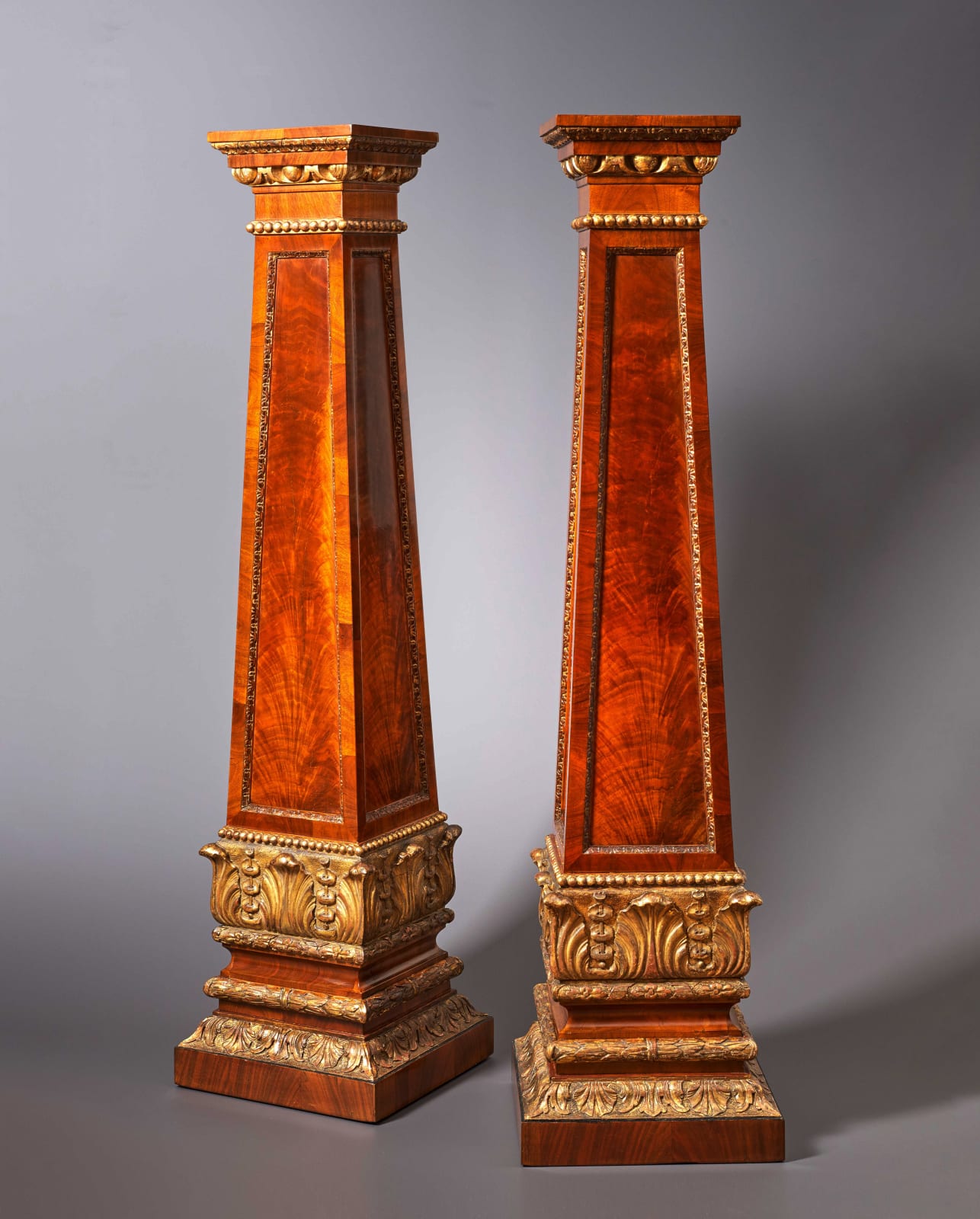Unknown
Provenance
Christie’s London, 14th December 2000, lot 115.
An elegant pair of Regency carved mahogany and parcel-gilt pedestals, each with a square top with feather banding above a carved giltwood acanthus leaf band followed below by an egg-and-dart band above a square tapering panelled pilaster shaft ornamented around its square base by a beaded border above an elaborately carved band of alternate acanthus leaves and stylised lily pads above ribbon-tied foliate bands and a stepped lotus and acanthus leaf border
England, date circa 1815
Height 123.5 cm, width and depth of the top 22.5 cm. each.
Provenance: Christie’s London, 14th December 2000, lot 115.
Carved wooden pedestals or stands, such as this fine pair, were adaptations of the lower structure of a column in classical architecture and also of the stones used in antiquity to mark boundaries. They became especially popular in England during the eighteenth century when architects installed them in great Palladian houses, where they not only accorded with the surrounding classical architecture but were also used to support candelabra, vases, perfume jars, lamps or perhaps to display a marble or plaster sculptural bust. When the Neo-classical style was at its height during the late eighteenth and early years of the nineteenth century, pedestals or stands generally had, as here, a tapering angular shaft placed between the entablature above and base which were carved with various classical motifs and decorations.
The fact that these pedestals are decorated on all sides indicates that they may originally have been intended to stand within the setting of a columnar screen so as to separate one part of a larger room from another. The fashion for dividing spaces such as a gallery or library in this manner was popularised by such architects as James Wyatt (1746-1813) at Heveningham Hall, Suffolk and Robert Adam (1728-1792) at Kenwood House, Hampstead. In the latter instance one can still see similarly shaped painted pedestals placed below the imposing columnar screen within Kenwood’s great library.
With their bold carving and parcel gilt decoration offset by the rich tones of the surrounding mahogany, these handsome pedestals dating from about 1815 epitomise the English Regency style in which the principle design was inspired by antiquity. Included are a number of Greco-Roman classical decorations, notably the distinctive egg-and-dart banding as well as the use of acanthus leaves. On the other hand, the inspiration behind the stylised lily pads and lotus leaf decorations comes from ancient Egypt, which in itself was integral within Neo-classical and in particular Regency ornament.
